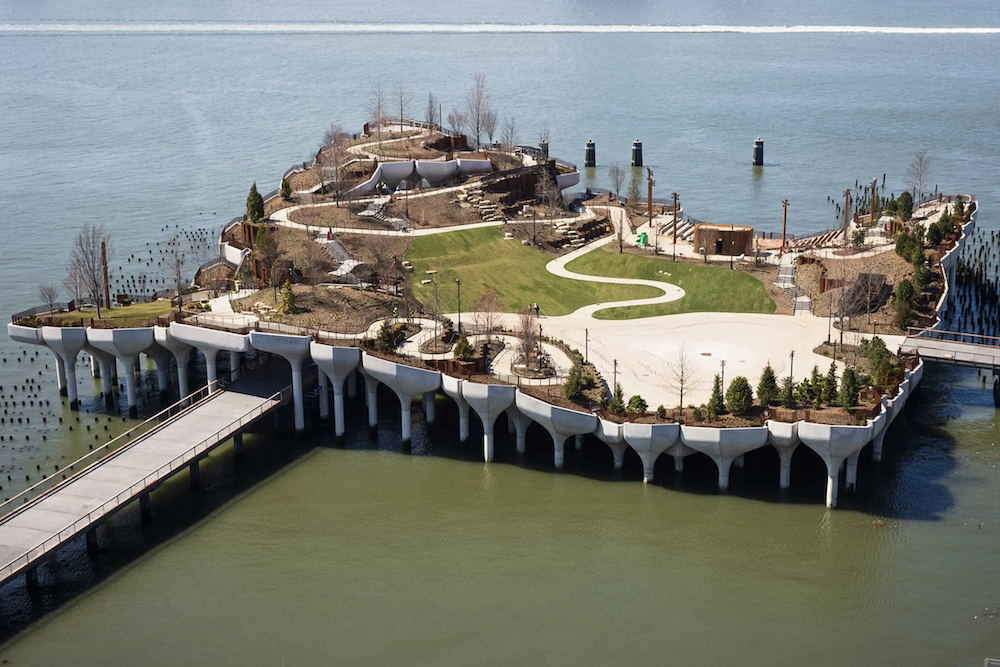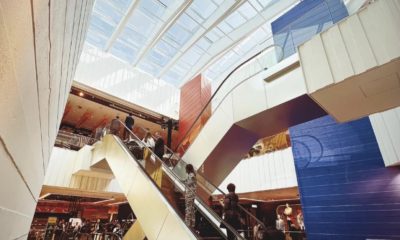FOR CITIES TO live and breathe, they must grow and evolve. And though many retail stores are designed with an understanding of urban planning (move people and move money), it’s the large metropolis that can learn from retail’s relentless metamorphosis from one decade to the next. Never remaining stagnant, the successful long-term retailer readily embraces the challenging forces of change. Adapting to change can be empirical, particularly in the face of new technologies and existential provocation, such as the vice-like grip of a worldwide pandemic.
Retail will survive because of its innate ability to revise, restructure and refashion. Cities must do the same. For decades, portions of the west side of Manhattan lay fallow, underused and underserved. The west side waterfront, stretching from the Meatpacking District, north to the Javits Center and further to Hell’s Kitchen, was deteriorating for decades with its collapsing piers, rusting beams and decaying pylons. After years of neglect, a spark was ignited in the area with the 2009 opening of The High Line. The brilliant transformation of a crumbling elevated railroad siding to an elevated urban park led to the beginnings of a grand rebirth of a storied portion of the Big Apple.
The history of The High Line clearly demonstrates the point that cities must be living, breathing entities that, much like commercialism, grow and evolve. As the city’s population expanded in the early days of the 20th century, the transportation of freight at street level became increasingly dangerous. When constructed in 1934, the elevated train tracks were lauded as one of New York’s greatest urban improvements. By the early 1960s, however, progress changed that perception with the emergence of the interstate highway system, which dramatically changed the accepted methods for the movement of freight. The modern network of super highways forced the elevated tracks to become a blight on the area with its rambling vegetation, accumulating trash heaps, and uninvited intruders.
Along with the renovation/repurposing of The High Line, the area began to blossom with the reinvigoration of the Meatpacking District, the opening of Chelsea Market, Chelsea Pier, the Whitney Museum, and most recently, Hudson Yards. And now, caught in the crippling arms of the pandemic, the city is producing protective “antibodies” to fortify its inhabitants against the debilitating forces of depression and isolation.
As winter turned to spring, both literally and figuratively, in cities across America, people became eager to open the shutters and doors and venture out to find new experiences and new places to gather and socialize. The great outdoors has become a magnet, whether in the newfound ubiquitous sidewalk cafés that line the city streets or the open-air public parks that beckon sun worshippers, runners, picnickers and birdwatchers alike. And as the city began to live and breathe again, new experiences were at a premium (take note, retailers).
New York has always been a hotbed of creativity, and as such, two celebrated New Yorkers stepped up with an inspired gift to the sunshine-seeking denizens of Gotham. Fashion designer Diane von Furstenberg, together with her husband, businessman Barry Diller, envisioned and created a magical meeting ground in a place that didn’t exist before. The Little Island, as it’s been dubbed, sitting on the Hudson River, is a $260 million offering to an ever-evolving city.
Advertisement
Much like the innovative above-ground railroad spur of the 1930s, Pier 55 on the Hudson River also made its mark in the annals of New York’s hardscrabble history. It was a welcoming embrace to the survivors of the sinking of the Titanic in 1912 when the RMS Carpathia, carrying the weary travelers to dry land, docked there. Ironically, just a few years later, it bid bon voyage to the passengers of the doomed Lusitania. Lying dormant and decrepit for generations, the site of the fabled pier is now the home to the latest shot of adrenaline for Manhattan’s west side waterfront.
Constructed on concrete pilings suggestive of blossoming tulips sunk deep into the riverbed, the once decaying pier is now a 2.4-acre public park. Located just off 13th Street, Little Island was designed by Thomas Heatherwick, founder of London-based Heatherwick Studio. Working closely with the Diller-von Furstenberg Foundation, the park was conceived as a new public space with gently undulating hills, an amphitheater, luxuriously green lawns and multiple opportunities to connect with nature and art. One hundred and thirty-two concrete “tulips” hold up the fashionable Little Island that now serves as a venue for live performances and a viewing perch for the magnificent sunsets over the Hudson. To locals, tourists and dreamers of every stripe, Little Island is a whimsical fantasy playground floating magically above the surface of the mighty river.
Much like retail, cities evolve out of need, challenge and change. Covid has clearly created needs and challenges that we never faced before, and it has certainly fostered great change. As we face the future with optimism, this fashionable Little Island, a place for happiness and joy, has become an endearing refuge and perhaps an enduring icon of the of the great city of New York.


 Photo Gallery3 days ago
Photo Gallery3 days ago
 Headlines1 week ago
Headlines1 week ago
 Sector Spotlight2 weeks ago
Sector Spotlight2 weeks ago
 Headlines1 week ago
Headlines1 week ago
 Headlines4 days ago
Headlines4 days ago
 Headlines2 weeks ago
Headlines2 weeks ago
 Designer Dozen1 week ago
Designer Dozen1 week ago
 Headlines2 days ago
Headlines2 days ago




















